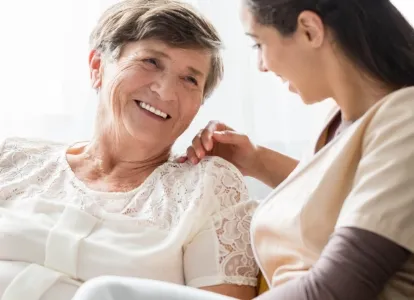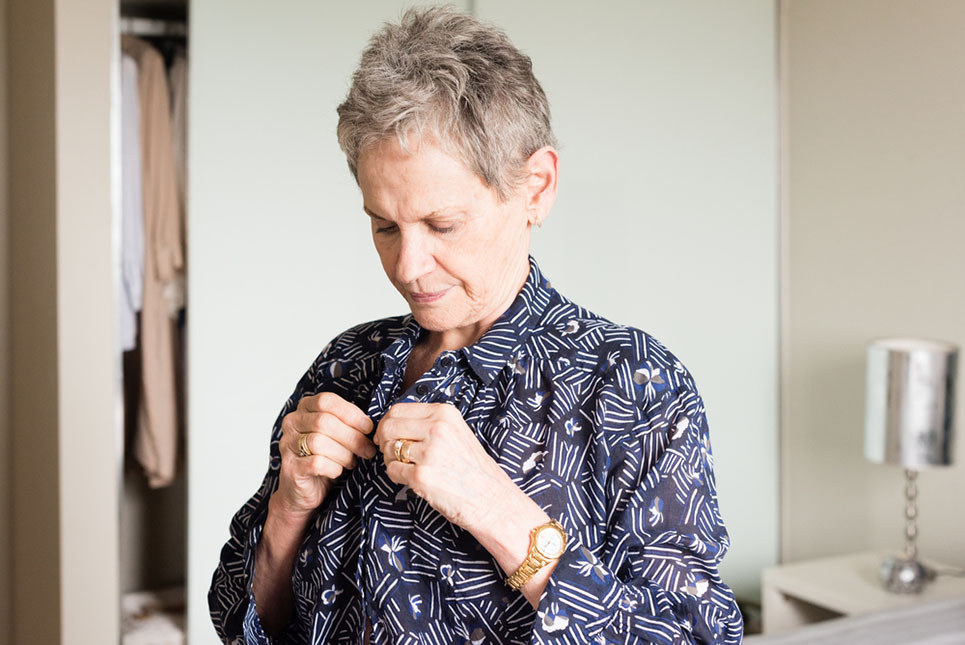ADL & IADL: A Guide to Instrumental Activities of Daily Living
If you have an elderly loved one, you have probably seen the acronyms ADL and IADL being used. These terms stand for “activities of daily living” and “instrumental activities of daily living.” Together, ADLs and IADLs encompass the full span of tasks that a person needs to complete in order to live by themselves independently. In this guide, we break down the difference between ADLs and IADLs and explain why they’re so important.
What Are ADLs vs. IADLs?
ADL is the abbreviation for “activities of daily living.” You might also sometimes see the abbreviation BADL, which stands for “basic activities of daily living.” These terms refer to fundamental activities and everyday tasks that are necessary for living independently. Examples of ADLs include:
- Walking, standing up and sitting down
- Feeding oneself
- Bathing and grooming
- Getting dressed in senior clothing
- Using the restroom
IADL is the abbreviation for “instrumental activities of daily living.” These refer to more complex tasks that require longer term thinking and organization. Unlike ADLs, which we usually master in childhood, most people learn how to perform IADLs as teenagers. Examples of common IADLs include:
- Paying bills and managing finances
- Transportation, such as driving oneself or navigating public transit
- Meal preparation and cooking
- Grocery shopping and errands
- Maintaining the home and yard
- Managing medications
Usually, older adults will struggle with IADLs before they struggle with ADLs. For example, they might be able to feed themselves just fine if you put food in front of them, but they may not be able to choose a recipe, make a grocery shopping list, drive to the store, buy the ingredients, drive back home and actually cook the meal.
If you think your older loved one might be losing the ability to live alone, then look to the IADLs first. Seniors might stop cooking altogether, or forget to take medications when they are supposed to, or let the yard and house go, while still managing to get dressed or eat on their own without a hitch. Try to occasionally visit their home to check in on them and see if there are signs of them struggling with IADLs such as overdue bill notices or a fridge packed with frozen meals. Your family member or loved one may be in denial about their capabilities (or lack thereof), and sometimes it takes an outside perspective to assess where they are.

By Monkey Business Images / Shutterstock.com
How are ADLs and IADLs Assessed?
ADLs and IADLs are assessed using standardized tools, questionnaires, interviews, and direct observation to determine an individual’s ability to perform daily tasks and live independently. Tools like the Katz Index and Lawton IADL Scale provide structured assessments of basic and complex activities, respectively. Self-report questionnaires and caregiver interviews offer valuable insights but can be subjective, while direct observation in home or clinical settings gives a realistic view of abilities.
Combining these methods, often through a multidisciplinary team, ensures a comprehensive evaluation, essential for accurate care planning, resource allocation, and monitoring progress. This holistic approach helps identify areas for intervention, promoting safety, independence, and improved quality of life.
Why are ADLs and IADLs Important?
ADLs and IADLs determine what level of care your loved one needs. If they are mostly struggling with instrumental activities, then you or another family member might be able to step in to help out a couple of days a week. You can also outsource care management and hire outside help personal care or assisted living professionals to take care of tasks that your loved one is no longer able to, such as yard work and house cleaning. With a little bit of assistance, older adults struggling with IADLs can sometimes continue their independent living for many years to come.
Adults struggling with ADLs need much more hands-on support, sometimes around the clock. They cannot bathe, dress or feed themselves, which means that they need someone to help them do it. You might need to hire a private duty nurse or home health aide to get them the assistance they need. In some cases, it may make the most sense to help your loved one to transition to an assisted living facility where they can have 24/7 help no matter the time of day or night.If you’re unsure of when it’s time for a nursing home, we have helpful tips for assessing signs of decline in elderly loved ones to help you make that decision.

By wavebreakmedia / Shutterstock.com
Do keep in mind that sometimes older adults struggle with ADLs because the world simply isn’t built for aging and its limitations to daily life. Small changes such as installing ergonomic door knobs or buying some easy-to-put-on clothing for the elderly can help your loved one maintain independence for longer. While your older parents will need help with ADLs eventually, you don’t necessarily need to move them into a nursing facility or assisted living community the second they find ADLs challenging. Have a conversation with them about what activities they find most challenging and see if there is a solution out there for them.
At Silverts, we sell a wide range of adaptive clothing — including elastic waist pants and full coverage hospital gowns — to make aging easier for boths seniors and their caretakers. Browse our selection to find senior clothing for both men and women. If you buy more than $20, you’ll get free shipping on your U.S. order, so start shopping today!
Sources:
- AARP. Transportation: What Caregivers Need to Know. https://academic.oup.com/acn/article/31/6/506/1727834. Accessed on July 31, 2024.
- Mlinac, M & Feng, M. Assessment of Activities of Daily Living, Self-Care, and Independence. https://academic.oup.com/acn/article/31/6/506/1727834. Accessed on July 31, 2024.





No Comments